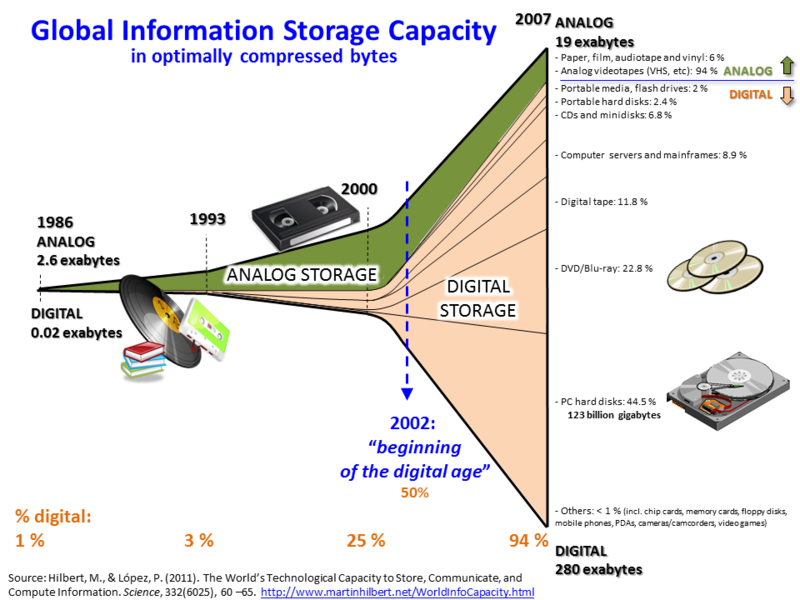In the first few sections of this blog series, we answered the question: What is research data management (RDM)? In this post, we will provide more detail on the changes in the research process that relate to RDM and explain why it has become increasingly important to understand the significance of RDM.
(Tämä artikkeli on saatavilla myös suomeksi.)
Text: Tanja Lindholm
A lot has changed in the past few decades, and the major changes undoubtedly include the increase in digital tools for research environments, the development of the World Wide Web, and the growth of data storage and computing – this has been the beginning of the so-called digital revolution (Fig. 1).
The digital era has presented many new opportunities for research in the form of new tools, larger storage capacities, and simplified data sharing. On the other hand, the digital era has brought many new challenges and responsibilities and, as a result, the importance of research data management (RDM) has grown.
Using a rough comparison of fieldwork from the early 2000s and the present time, let’s take a brief look at what has changed and what these changes mean.
”Research is not what it used to be”
Examples of our primary fieldwork tools in the early 2000s were pen and paper, and analogue or digital cameras. While pen and paper still exist, our main tools in many situations today are mobile phones and their apps. Fifteen to twenty years ago, the cheapest and most effective methods for storing data were memory cards, USB sticks, and external hard drives. Currently, we can store data on our phones and transfer it to a different system – or a colleague – almost anywhere, anytime.

Nowadays, most institutions provide good and safe options for data storage. There is no excuse to use unsafe or homemade solutions anymore!
New policies and laws have been established during the digital era and for good reason. At the same time, our research data needs to be FAIR (findable, accessible, interoperable, re-usable), open, and traceable. Research is not what it used to be when we think of the digital changes and the demands of responsible science. While we produce vast amounts of data, the relevant issues are often only a minor topic in public discussion and researcher training. Generally, there has been a lack of focus on what we do with data, how we handle it, and what we keep or delete. Therefore, we need comprehensive RDM – not only to keep up with the legal and ethical issues, but also to improve the management of large amounts of data. The systematic practices that result from proper planning also save time, money, and effort, as everyone working on the project is following the same plan.
In the next part of this blog series, we will take a closer look at why it is important to plan RDM in advance.
Research Data Management – know your data!
|

